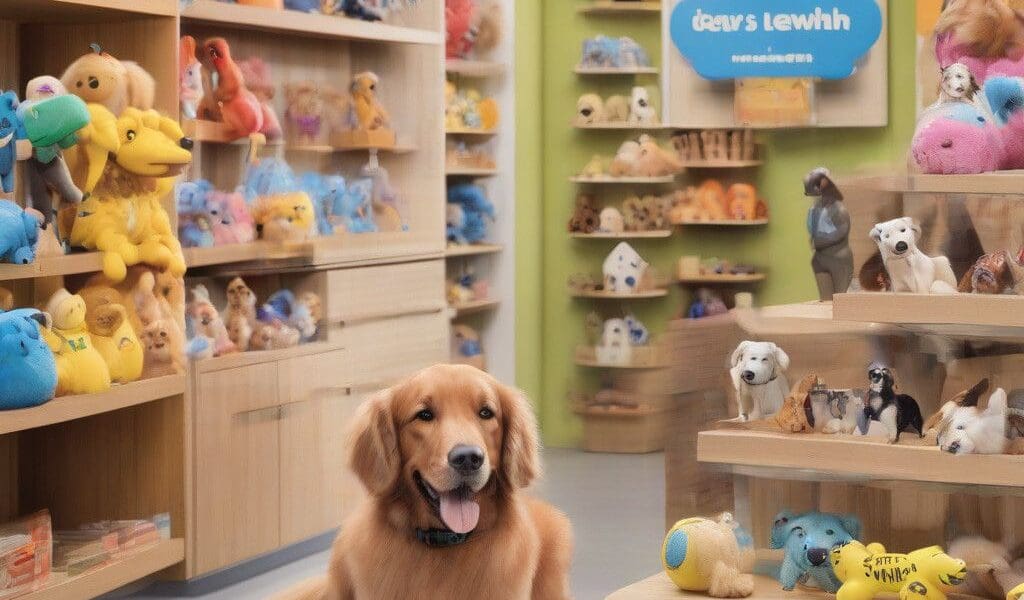In a landscape where online shopping plays an increasingly significant role, Bark’s latest partnership with Chewy is a notable development for the pet supply industry. This move not only reinforces Bark’s position in the direct-to-consumer (DTC) realm but also highlights its commitment to adapting to retail trends that can drive sales growth.
Bark has established itself as a leader in the DTC space, with a staggering 89.0% of its revenue stemming from direct sales during its latest fiscal year. However, recognizing the growing power of online marketplaces, particularly Chewy, Bark is taking proactive measures to broaden its customer reach. As of August, limited-edition collections of dog toys will now be available on Chewy’s platform, which boasts more than 20 million customers. This initiative illustrates Bark’s strategy to engage with a wider audience while fulfilling the needs of dog owners.
Michael Black, Bark’s Chief Revenue Officer, emphasized the importance of meeting customers where they choose to shop. “With Chewy’s massive reach, we can connect with even more dog parents,” Black stated. The partnership with Chewy not only allows Bark to leverage the retailer’s vast market presence but also aligns with their strategic vision of being accessible across various retail channels.
Bark’s products will include popular existing toys such as the Grey Bear Hugger and new limited-edition items. Matt Meeker, Bark’s CEO, expressed optimism about the customer feedback received from earlier test launches. This enthusiasm signals Bark’s dedication to continuously expanding its toy offerings, specifically tailored to diverse customer preferences.
The latest data show promising trends for Bark. The company’s commerce segment experienced noteworthy year-over-year growth, with sales via platforms like Chewy increasing by 5.2% to $9.2 million in the second quarter. This uptick reflects Bark’s effectiveness in targeting consumers beyond its traditional DTC channels.
Bark isn’t new to collaborations with large retailers. In total, their products are available in over 40,000 retail outlets, including major retailers such as Target, Walmart, and PetSmart. By diversifying its retail presence, Bark aims to capture the attention of dog parents in various shopping contexts. Black explained, “The commerce segment is becoming increasingly important as we aim to meet dog parents wherever they shop.”
Moreover, Bark’s unique product designs enhance its appeal in retail channels. For instance, the Snack Pack Cereal-Inspired Dog Treats have gained traction in stores like Target and PetSmart, crafted specifically to attract customers looking for innovative and nutritious options for their dogs. The treat packaging’s nostalgic look — reminiscent of popular ’80s and ’90s cereal boxes — stands out on the shelves and engages consumers both at first glance and through interactive features.
With the holiday shopping season on the horizon, Bark’s retail strategy becomes even more relevant. Black teased new offerings for 2024, including seasonal products that tap into the festive spirit. The Season’s Sweetings Advent Calendar, set to be available exclusively at Costco, follows a successful release from the previous year and caters to pet owners wanting to bring joy to their furry friends during the holiday countdown.
Such initiatives highlight Bark’s understanding of targeting sales opportunities that merge festive sentiments with consumer desires to pamper their pets. The excitement around these offerings positions Bark well to capture attention throughout the holiday season.
Looking to the future, Bark’s partnership with Chewy not only enhances its market presence but also serves as a reminder of how dynamic the e-commerce landscape can be. By fostering strategic relationships with established retailers, brands can leverage existing customer bases to drive growth. For Bark, the goal remains clear: convert new dog parents into loyal customers while ensuring they return for future purchases.
As retailers continue to evolve, Bark’s approach of integrating DTC strategies with broader retail partnerships demonstrates a successful model that taps into consumer behaviors effectively. With this strong foundation, Bark is well on its way to achieving its projected online sales milestone of $457.79 million in 2024.
In conclusion, by strategically aligning with major players like Chewy, Bark is poised not only to enhance its sales potential but also to enrich the experience of dog parents across the United States.












